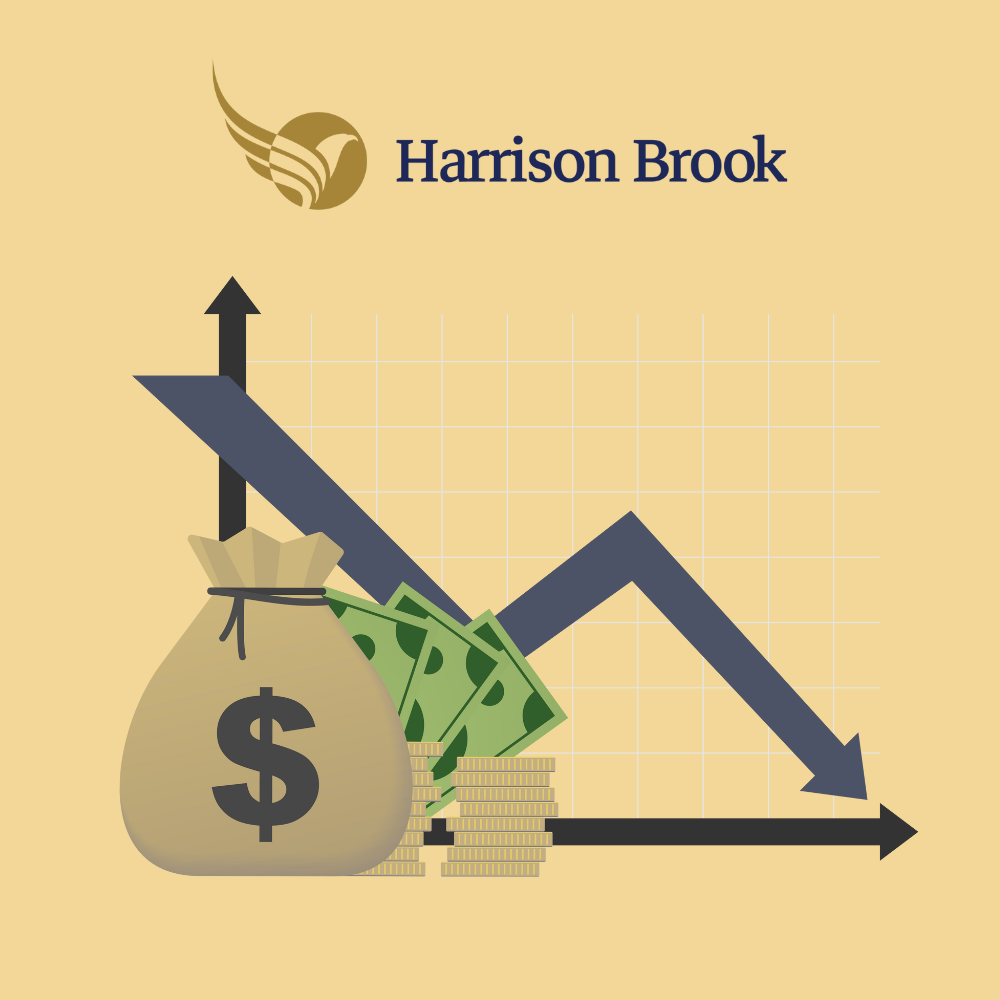
The US dollar has long been a global financial pillar, but in an increasingly complex economic landscape, its value is not immune to fluctuation. Rising interest rates, geopolitical uncertainty, inflation concerns and shifts in global monetary policy can all put downward pressure on the dollar. For investors and expats with international exposure, knowing how to hedge against a declining US dollar is essential. Managing dollar exposures is a key consideration for investors and expats with international portfolios, as it can impact risk and portfolio performance.
In this guide, we explore smart strategies to protect your portfolio, the best assets to consider, and what happens when the dollar weakens. Whether you are living abroad or managing cross-border investments, hedging currency risk can help safeguard your wealth.
Why Is the US Dollar Losing Value?
Several factors can contribute to the US dollar losing value. These include:
- Higher US debt levels: Increased borrowing and fiscal deficits reduce investor confidence.
- Shifts in global currency dominance: Nations like China and blocs like the EU are pushing for alternatives.
- Rising inflation: Reduces the purchasing power of the dollar.
- Interest rate changes: If US rates lag behind other economies, the dollar may weaken.
Forecasts for US economic growth also play a key role; expectations of slower economic growth can lead to a weaker dollar as investors anticipate reduced returns and potential shifts in trade balances and monetary policy.
Understanding these drivers helps frame why a proactive hedge against the dollar may be necessary.
Understanding Currency Risk and Governing Law
Understanding currency risk is essential for anyone investing across borders or holding assets in more than one currency. Currency risk, also known as exchange rate risk, arises from fluctuations in exchange rates between currencies such as the US dollar, Canadian dollar, Australian dollar, or Japanese yen. These currency movements can significantly impact the value of your investments, especially if you have foreign currency exposure through international stocks, bonds, or real estate.
For example, if you invest in assets denominated in the British pound or Swiss franc, and those currencies strengthen against the US dollar, the value of your investments may rise when converted back to dollars. Conversely, dollar weakness can erode returns if the foreign currency depreciates. This is why many investors consider currency hedging strategies to manage their currency exposures and reduce the impact of currency fluctuations on their portfolios.
Currency hedging involves taking steps to offset potential losses from adverse exchange rate movements. This might include using financial instruments or holding a mix of assets in different currencies to create a natural hedge. However, hedging can also introduce additional costs and may not always be effective, especially in periods of heightened uncertainty or rapid market changes.
When making investment decisions, it’s important to consider your own risk tolerance, investment objectives, and financial situation. A diversified portfolio that includes a range of asset classes—such as fixed income, equities, and foreign currency exposure—can help manage currency risk and provide diversification benefits. Remember, past performance is not a reliable indicator of future results, and recent weakness or strength in one currency does not guarantee future performance.
Investors should also be aware of the legal and regulatory environment, as governing law and applicable laws in your relevant jurisdiction can affect your investments. For instance, monetary policy decisions by the Federal Reserve or tariff announcements from the Trump administration can influence exchange rates and currency exposures. Understanding these risk factors is crucial, especially for foreign investors or those with unhedged US assets.
Operational risks, such as dealing ahead, incorrect data transmission, transmission blackout, or delayed transmission, can also impact the accuracy and timeliness of investment research and the data presented. The public nature of such information means it may not always reflect the most current market conditions, so it’s important to use multiple sources and consult with a professional before making any investment decision.
Ultimately, managing currency risk is about understanding your exposures, staying informed about exchange rate movements, and seeking professional investment advice tailored to your needs. The value of investments can go down as well as up, and you may not get back the amount you invested. This information is for general purposes only and does not constitute investment advice. Always consult with a financial advisor or investment professional to ensure your investment strategy aligns with your goals and risk profile.
How to Hedge Against a Falling US Dollar
Hedging does not mean betting against the dollar but rather protecting yourself from downside risks. Some investors may choose a partial hedge to balance potential gains from currency movements with the cost of hedging. Here are practical ways to hedge:
1. Diversify Away From USD Assets
A simple and effective way to reduce dollar exposure is to invest in assets denominated in other currencies. This could include:
- Foreign stocks and bonds: Particularly in economies with strong growth or stable currencies.
- International ETFs: Low-cost exposure to multiple regions without picking individual stocks.
This strategy limits your risk if the dollar depreciates relative to other currencies.
Additionally, some investors may adopt increased hedge ratios to further reduce their exposure to the US dollar during periods of expected decline.
2. Gold and Commodities
Gold has long been a hedge against currency devaluation. When the dollar drops, gold often gains as investors seek safety in real assets.
Other commodities like oil and agricultural products, typically priced in dollars, can also benefit from a weaker USD.
3. Cryptocurrencies
Some investors turn to Bitcoin and other cryptocurrencies as an alternative store of value. While volatile, crypto assets are independent of central bank control and may offer diversification.
Be cautious though – crypto is not a perfect currency hedge and should not dominate your portfolio.
4. Foreign Currency Accounts
Holding cash in a foreign currency savings account provides a direct hedge. This is particularly useful for expats or those with future spending needs in other countries.
Make sure to compare interest rates, bank fees and currency conversion terms.
5. Real Assets and Property
Investing in international real estate or infrastructure can offer long-term stability. Property values are often tied more closely to local economic conditions and can appreciate if the local currency strengthens against the dollar.
6. Stocks That Benefit From a Weak Dollar
Some sectors thrive when the dollar weakens. For example:
- Export-driven companies: Their products become cheaper for foreign buyers.
- Multinational firms: Earnings from abroad translate into more dollars.
- Commodity producers: Can command higher prices globally.
Look for globally diversified companies listed on US exchanges.
While these stocks may benefit from a weak dollar, future returns are uncertain and depend on a range of market factors.
What Is the Best Investment When the Dollar Falls?
When the dollar declines, assets that are less dependent on US economic strength or are denominated in other currencies can outperform. Consider:
- Emerging market funds
- International dividend stocks
- Treasury Inflation Protected Securities (TIPS)
- Precious metals
- Energy and commodity ETFs
Some investors also look to currencies like the Swedish krona, which may offer diversification benefits during periods of US dollar weakness.
For a personalised approach, speak to a Harrison Brook financial adviser.
What Happens When the US Dollar Declines?
A declining dollar has ripple effects:
- Imported goods become more expensive, fueling inflation.
- Exports become more competitive, which can help US manufacturers.
- Foreign travel becomes pricier for Americans.
- Global markets may react as confidence in the dollar wanes.
A weakening dollar can also affect investment returns and global market dynamics, making it important for investors to monitor currency trends.
For investors, this underscores the importance of planning for currency risk.
Is It Better to Have a Strong or Weak US Dollar?
It depends. A strong dollar benefits importers and Americans travelling abroad. However, US dollar strength can fluctuate based on economic fundamentals and is not always a reliable safe haven during periods of market turbulence. But a weaker dollar can boost domestic production and help investors with non-US assets.
The key is balance – and ensuring your financial plan is resilient in either scenario.
Is Now a Good Time to Hedge?
If your portfolio is heavily tied to the dollar or you plan to retire overseas, hedging now could protect against potential losses. When evaluating hedging strategies, it is important to consider both the near term and medium term outlook for the US dollar, as short-term market movements and longer-term macroeconomic trends can both impact your risk exposure. With economic uncertainty and shifts in global power, waiting may increase your risk.
Speak to an adviser who understands both the US and international landscape to explore tailored options.
FAQs – Hedge Against a Declining US Dollar (USD)
How can I protect my assets if the dollar collapses?
Diversify internationally, invest in real assets like gold or property, and consider holding cash in stronger currencies. Avoid overconcentration in dollar-based investments.
What is the best performing currency against the USD?
This varies, but traditionally the Swiss Franc, Japanese Yen, and some emerging market currencies have performed well in downturns. A financial adviser can help monitor current trends.
Who benefits from a weak dollar?
US exporters, multinational corporations, and holders of foreign assets generally benefit when the dollar falls.
Are there currency ETFs?
Yes. Currency ETFs like the Invesco DB US Dollar Index Bearish Fund (UDN) offer exposure to a falling dollar. These are complex instruments and should be used with professional guidance.
What is a perfect currency hedge?
There is no one-size-fits-all solution. A mix of foreign currency exposure, international investments and inflation-resistant assets usually provides the most robust hedge.
Final Thoughts – How to Hedge Against a Declining US Dollar (USD)
Hedging against a declining US dollar is not about pessimism – it is about prudence. By understanding the risks and taking simple steps to diversify, you can reduce volatility and future-proof your finances.
At Harrison Brook, we specialise in helping Americans living abroad and those with international portfolios make the most of global opportunities while protecting against currency risk.
Speak to a financial adviser today to build a plan that works for you – wherever you are in the world.



